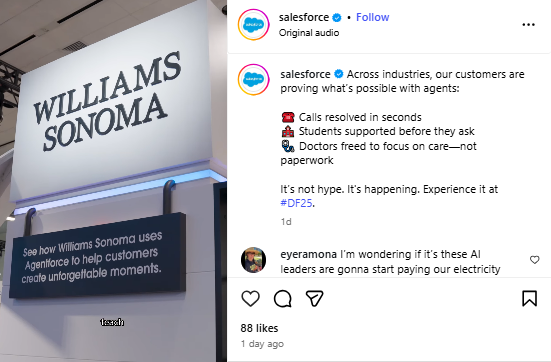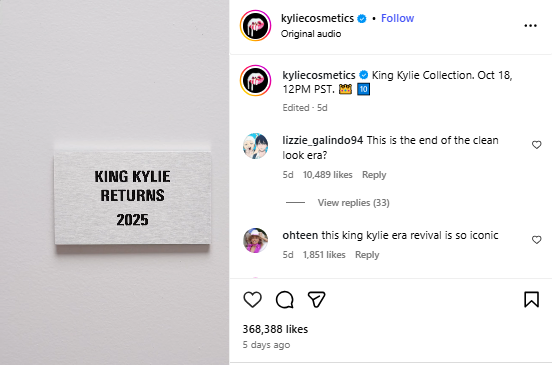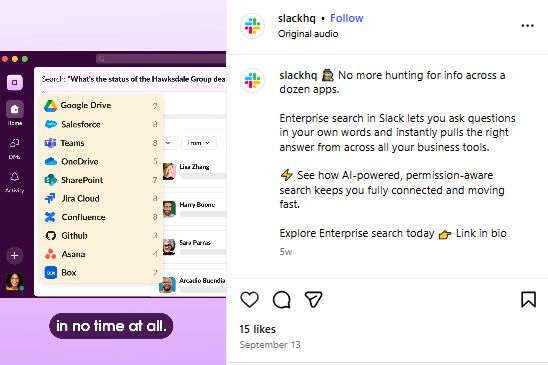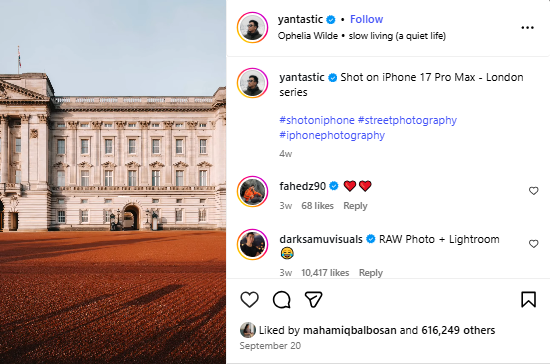
You’ve probably heard that every business should use video (89% already do), yet most brands jump in without a clear plan. They film product clips, share behind-the-scenes footage, or hire an agency to make something glossy. Then, they wonder why it doesn’t connect.
The truth is, video only works when it fits the goal. A startup trying to build trust needs a very different video from an online store aiming to increase sales. The right kind of video turns a casual viewer into someone who remembers your brand. The wrong kind? It can waste time, money, and attention.
Our guide talks about the main types of business videos and what each one does best. You’ll see where they fit in the marketing process and how to match them with your business stage and audience.
Before you start filming anything, take a step back and think about your video marketing strategy. The right kind of video depends on what you want to achieve and who you’re talking to. Start with a short checklist:
Here’s the one rule that simplifies it all: pick the video that answers your audience’s biggest question at their stage in the funnel.
For example, if you’re at the start of the sales funnel, short brand videos or explainers help people understand who you are and what you offer. Later, when they’re deciding between you and a competitor, product demos or testimonials can make that final push.
Once you know your goals, the next step is choosing the right kind of video. Some videos introduce your business to new people; others help close a sale or keep customers coming back. Below are the main formats worth investing in.
Explainers help make your message clear. They show what your product or service does and why it matters. Even better, these videos tend to do the best in terms of engagement.
Wistia’s data shows that how-to videos keep viewers watching the longest, as people watched 82% of such videos that were under one minute. These videos remain among the most-used because they work for both new and returning audiences.
Keep them around 60 to 90 seconds. Use simple visuals and a conversational script that answers one key question: “How does this help me?” That’s what Microsoft Teams does in its Instagram Reels about new or existing features.

Animation works great for apps or tech products; live action fits physical tools or services. Plus, animated explainer videos tend to be more engaging due to their highly visual nature.
If an explainer tells what your product is, a demo shows it in action. These videos highlight key features, show real use cases, and help buyers imagine themselves using it.
They work best on product pages, sales emails, or webinar intros. This Shopify demo video for its new AI-powered assistant is an excellent example of how to ace such videos with proper voiceovers and visuals.
Aim for 60 to 180 seconds, as short demos keep attention, while longer versions fit technical products. You don’t need fancy gear. Clear audio and a stable camera are enough.
Show real people using your product instead of just close-ups of features. It feels more natural and builds trust.
When potential buyers hesitate, they look for proof. That’s where testimonial videos step in. They feature real customers talking about how your product helped them, which is more powerful than any advertising you do on your own.
Keep them short (under 2 minutes) and record in a relaxed setting. Let your customers tell their story naturally without a polished script. Ask them questions like “What problem were you trying to solve?’’ and let them share their perspective. That’s what Hub Interiors has done in this video.
The best testimonials feel more like conversations than ads. That’s what you need to be aiming for.
These are the quick hits of the video world. They grab attention fast and spread your message across platforms like Instagram, YouTube Shorts, and TikTok. Short-form videos outperform longer ones for reach and engagement because they match how people scroll on mobile.
Ideally, you want to hook viewers in the first three seconds. Another best practice is to use captions because most people watch with the sound off. Keep it vertical, keep it quick, and always end with a call to action. Salesforce uses all these tips in its Instagram Reels.

These clips are perfect for teasing new products, sharing tips, or showing company culture. For example, Kylie Cosmetics used Reels to relaunch one of its older collections that took the Internet by storm.

Meanwhile, a more professional brand like Slack uses short-form Reels to share tips on how to use its tools more effectively. Again, you can see they’ve used captions, which is a must in today’s age.

These videos teach, explain, or guide. They’re useful for building trust and keeping existing customers happy. You can use them for product training or general how-to topics in your niche. Tutorials position your brand as helpful, not pushy, and make your audience come back for more advice.
The length of these videos depends on the topic. Go for two minutes for quick tips and longer for step-by-step lessons. Screen recordings, whiteboard explanations, or simple camera setups all work. Take inspiration from Jotform’s educational videos.
People enjoy seeing the faces behind a brand. Culture videos show your team, workspace, or the process that brings your product to life. They help humanize your business and attract both customers and potential hires. You can even use founder-led videos to further build trust.
Keep them under a minute for social media, and maybe a bit longer for your website. A simple office tour, a day in the life, or quick interviews can make your company feel approachable. This NGS video is a simple example of how to do it right.
Live videos and webinars bring real-time energy, as they let you interact with your audience directly, answer questions, and share updates. The trade-off: you need to schedule, promote, and manage them live. The reward: stronger engagement and genuine interaction.
Keep sessions focused and valuable. For example, a 30-minute product walkthrough or Q&A with your founder can drive sign-ups or sales. Save the recording to reuse on YouTube or LinkedIn later. Here’s an example of how Framework used a live Q&A with their founder to introduce their product to customers.
User-generated videos feature real customers using your product. Influencer content is similar but often comes from creators with an established following. Both types build trust because they come from peers instead of the brand itself.
Before reposting, always get permission and credit creators properly. Encourage customers to tag your business or use a campaign hashtag. That’s what Apple did with its #ShotonIphone hashtag. It now has hundreds of thousands of user-generated videos and pictures.

Every business sits somewhere on the scale between do-it-yourself and full professional help. The good news is that there’s a workable option for every budget.
Such video production is perfect for startups or small teams testing ideas. A smartphone, a tripod, and decent lighting can cover product clips, short explainers, or even basic testimonial video production. Authenticity often matters more than professional video production at this level.
Many companies create videos internally while hiring outside editors or camera crews for complex shots. This approach suits growing brands that need consistent content but aren’t ready for a full video marketing agency or video production company.
For example, a mid-sized tech company in Chicago might record customer success clips or internal updates using its own camera gear. They would then partner with a video production company Chicago team to edit footage, color grade, and add professional sound.
This hybrid setup gives you flexibility as you can produce fast, affordable content for social media while still having access to professional-grade work when it counts most. Similarly, when projects demand higher polish, like motion graphics, you bring in specialists for a short-term contract to keep control over brand voice and frequency without burning through your budget.
When your brand story demands cinematic visuals or advanced editing, partnering with a commercial video production team makes sense. Businesses in larger cities often work with specialists so that they can make use of the landmark locations and talent that the city offers. The cost of professional video production is definitely higher, but the end results are also more polished.
Once your video is ready, the next big question is where to post it and how to track its performance. YouTube and your website work best for longer explainers or product demos. Instagram, TikTok, and Facebook are ideal for short-form clips, brand highlights, and behind-the-scenes moments.
Our video distribution playbook can provide deeper insights into this step.
As for measurement, keep an eye on simple metrics like views, watch time, click-through rate, and conversions. For brand videos, track engagement and reach. And for sales-driven clips, measure leads or assisted conversions.
Try basic A/B tests to compare thumbnails, hooks, or captions. You might find that a small change doubles your results. Similarly, you can repurpose longer videos by turning key moments into short clips or sound bites for social posts. Small adjustments like these stretch your content further without needing a new shoot each time.
.gif)
Every video has a job. Instead of trying to make every format at once, start with the ones that serve your most important goal. Here’s a quick checklist to help you decide what to focus on first.
Once you understand which video formats match your goals, it becomes a steady approach in your marketing routine. Start small if you need to, then layer new formats as your audience and confidence grow.
If you’re serious about scaling, partner with a team that does this every day. A video production company Chicago, like INDIRAP, can help you turn ideas into professional content that fuels your sales, marketing, and recruitment goals. Our 100% done-for-you approach spans post-production, too, so you can focus on business operations while we handle the creative side of things.
It’s time to make your brand impossible to ignore. Work with INDIRAP to see how our corporate video production and social media marketing expertise can help you build an unstoppable content engine. Book a free, no-obligation Discovery Call today!